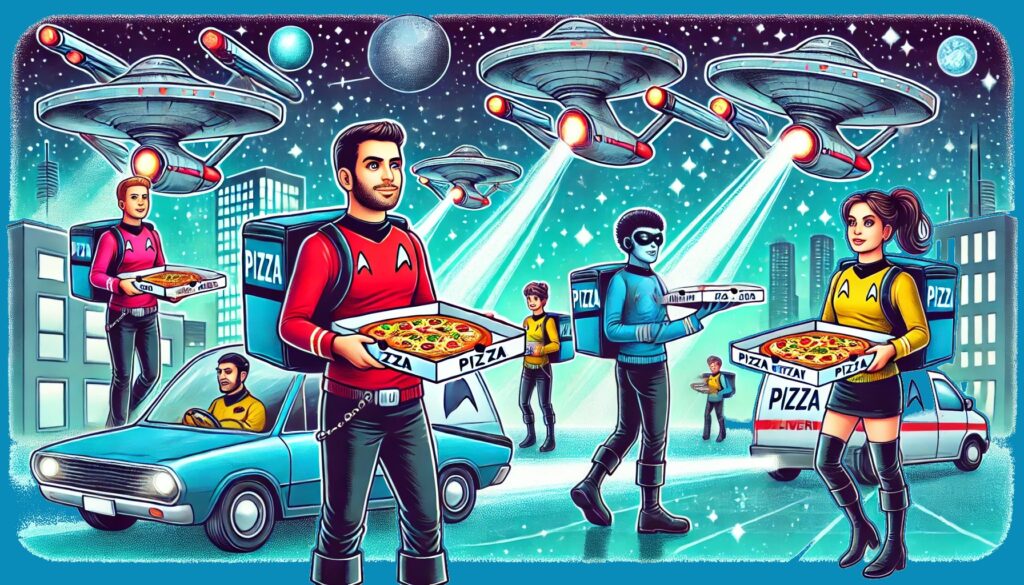Do you remember Lt. Commander Data from Star Trek? If you do, you probably also remember that Data was much more than a highly advanced and extremely skilled android officer serving the USS Enterprise crew. He was also a complex “being” endowed with many humanlike characteristics, including empathy and compassion, which turned him into a true friend. Now, can you imagine him as your boss? How cool would that be?
While we all know that characters like Star Trek’s Data are fictional, working for a robo-boss is a scenario not that far from reality. Although androids are not living among us—not yet, anyway—many of us already have intelligent apps or machines as “teammates” or “bosses”.
AI software solutions work by collecting data, analysing it, and responding accordingly. However, what’s really great about the most advanced AI models is that they are able to continuously adapt to new data, regardless of how complex it is, and learn from their “own experience”—just like Lt. Commander Data.
Examples? Well, there are plenty of them, from robot vacuum cleaners to self-driving cars. For those who argue the limited capacity of these systems to learn and evolve, here are several amazing technologies equipped with machine learning algorithms, which allow them to improve themselves based on the information they collect:
- Industrial or humanoid robots – Used alongside advanced automation systems in manufacturing, construction, and warehousing sectors, robots are getting better at performing a wide variety of tasks. One example is the humanoid robot used by Amazon in some of its warehouses.
- AI-powered traffic control systems – By providing real-time insights, these systems can help optimise traffic flow, reduce congestion, and improve safety. But they can also connect to other systems for different purposes, such as delivery route optimisation for more reliable and efficient supply chain operations.
- Algorithmic wage-setting systems – These systems can differentiate wage rates automatically, based on different criteria, such as work schedules, amount of work, and location. Likewise, AI algorithms are currently utilised to evaluate retail employees and customer service agents based on their interactions with customers.
- AI chatbots and virtual assistants – These apps have proven to improve customer and agent experience by answering basic questions and reducing wait times. According to a Gartner report, AI chatbots and virtual assistants are expected to handle about 25% of basic interactions by 2027.
- AI-powered air traffic management – Numerous AI technologies are being tested to make air traffic more predictable, efficient, and safe. Air traffic optimisation will also lower fuel consumption and reduce CO2 emissions.
- AI weather apps – AI-based weather forecasting systems can provide highly accurate weather predictions and improve warning times for extreme weather events.
- AI applications in the biomedical engineering field – These apps allow researchers to enhance diagnostic accuracy and offer more personalised treatments. Furthermore, the advent of AI technologies has led to the development of more precise medical devices that can revolutionise preventive healthcare by predicting potential health issues before they become critical.
- Human identification systems – Looking ahead, AI technologies offer promising avenues for future development of advanced biometric interfaces that can significantly enhance security and safety protocols by providing more accurate and reliable facial, speech, iris, and fingerprint verification methods.
- Ride-sharing and food delivery platforms are another good example. In this case, the software solutions powered by advanced AI algorithms can connect customers to businesses and drivers or riders without human intervention. That is possible thanks to AI systems’ ability to automatically collect, analyse, extract, and transfer various types of data over pre-set networks.
These examples are just a glimpse into the diverse applications of AI across different industries. As AI continues to evolve, we will definitely see even more exciting developments in the future. But this promise is not without pitfalls.
The widespread adoption of AI has already led to situations in which flawed decisions were made by algorithms due to a lack of contextual understanding. From algorithmic wage discrimination, unfair penalties, wrongful termination of contracts, and revoked worker access as a result of failed identification checks to selective and biased censorship on different online platforms, a series of cases have proven that AI algorithms currently lack the ability to apply common sense reasoning to real-life scenarios.
As AI is becoming a more integral part of our daily lives, a better regulatory and supervisory framework will be needed in order to ensure greater transparency in AI decision-making processes and protect fundamental human rights, such as freedom of speech and equal pay for doing “equal work”.




